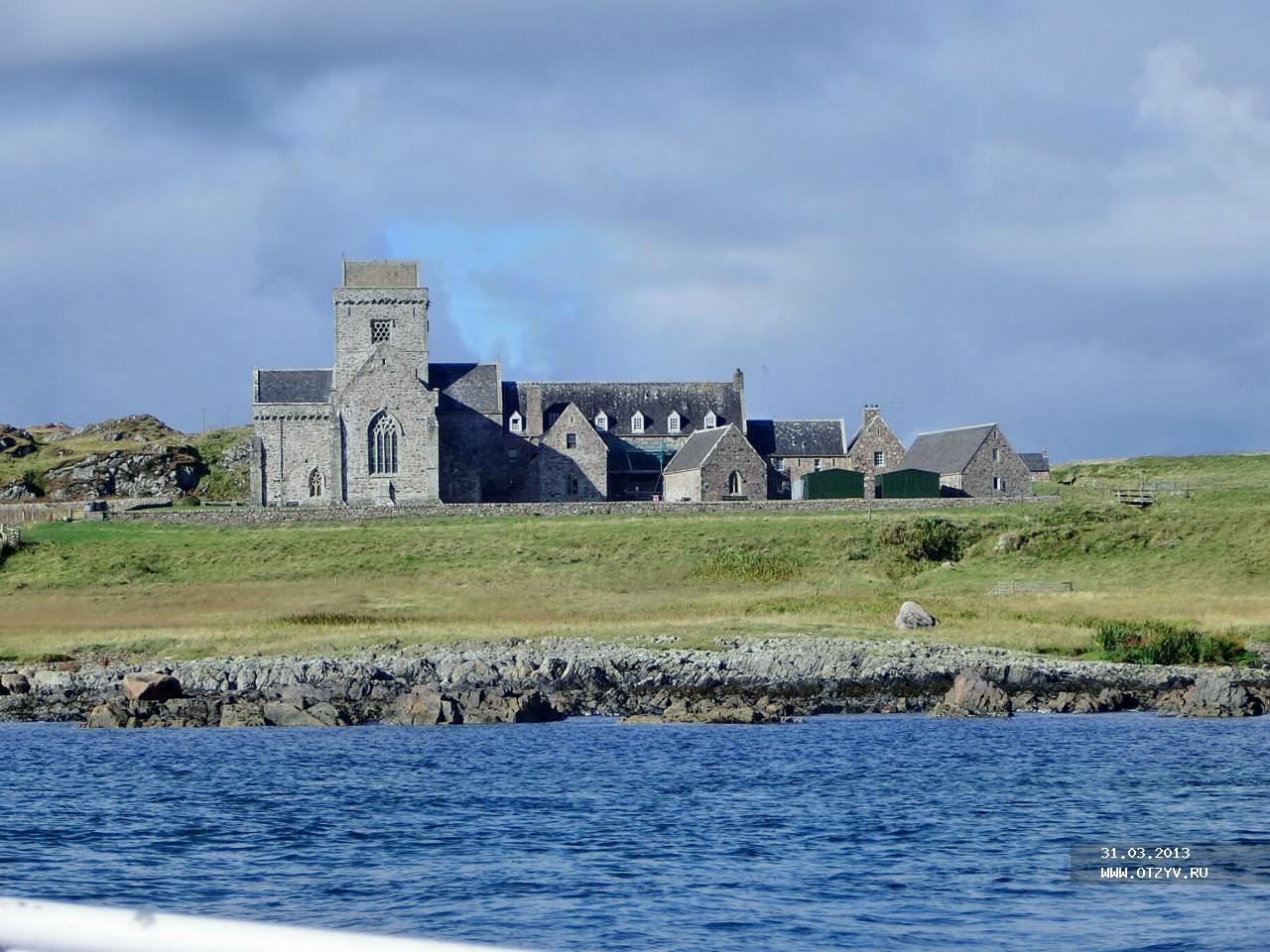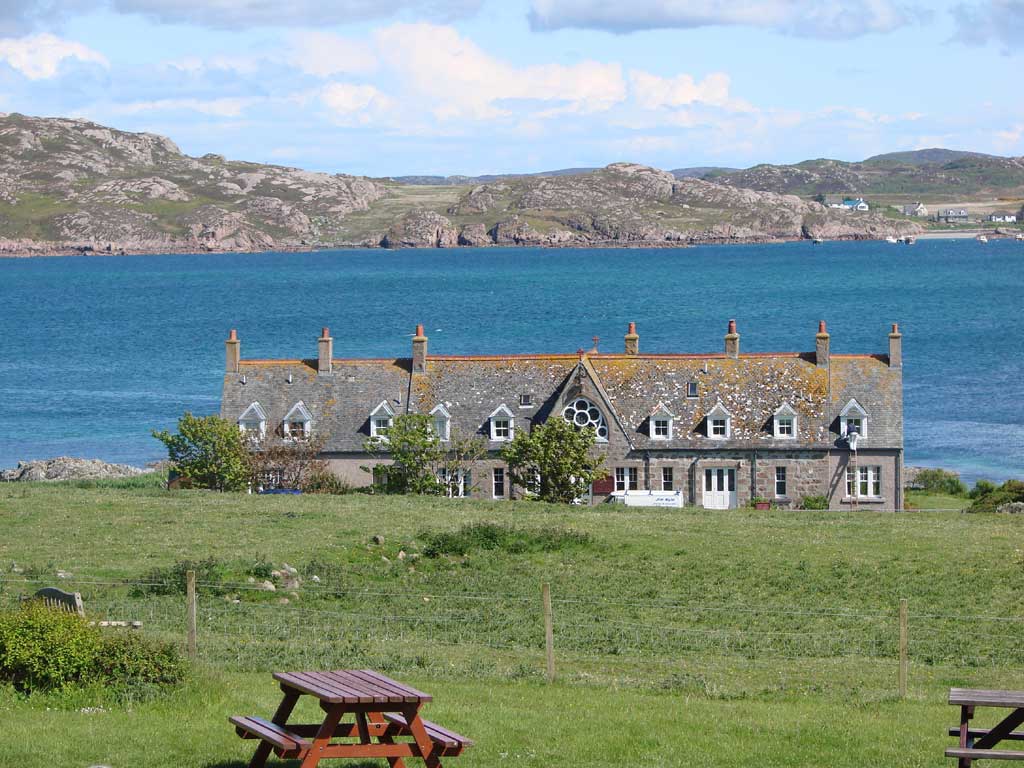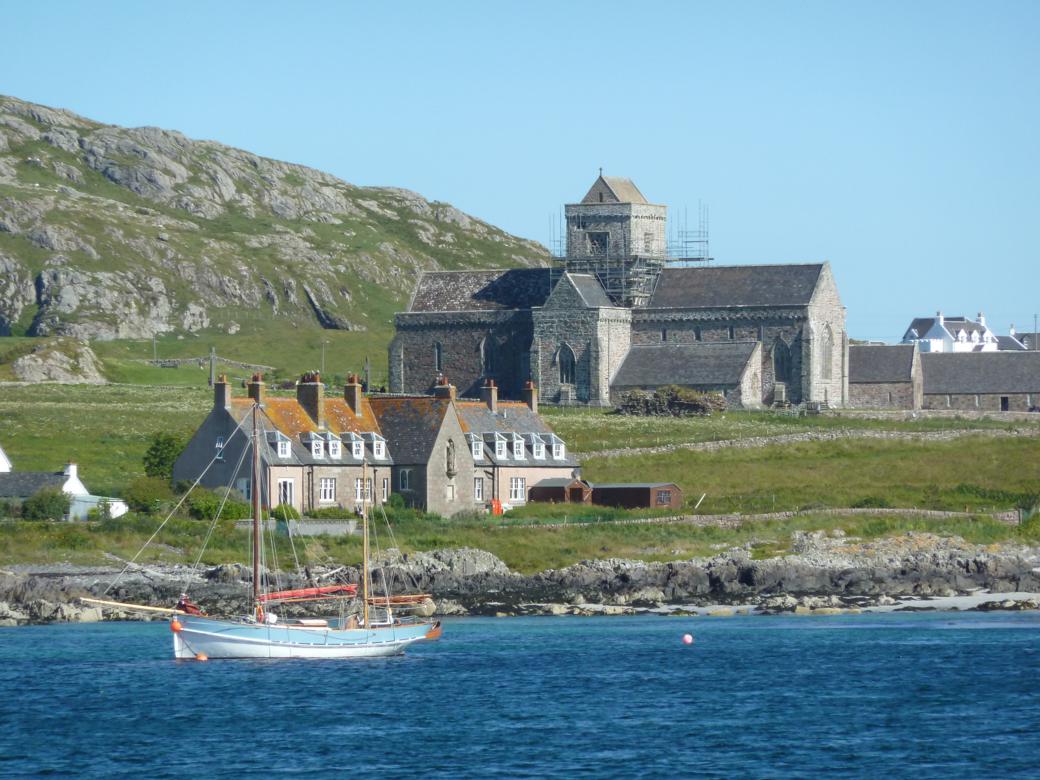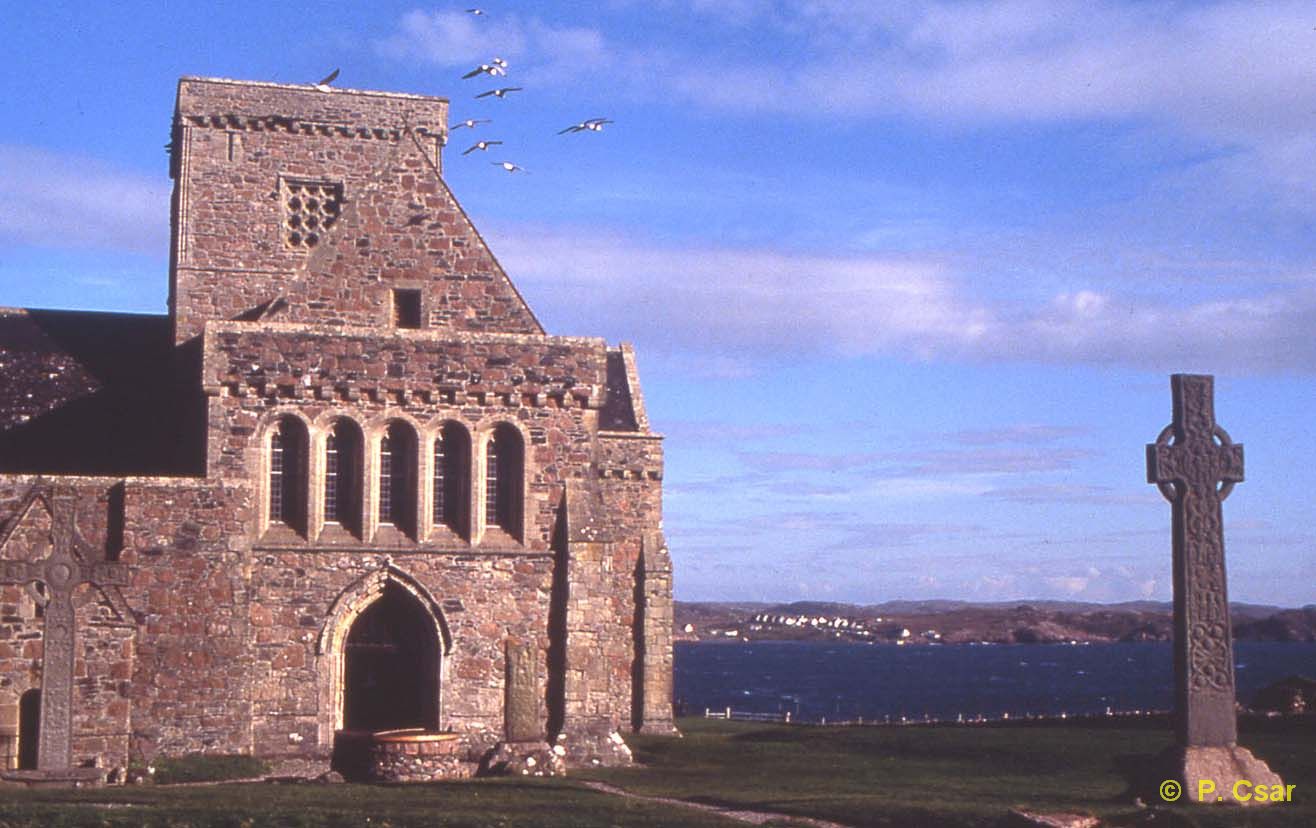Iona (Scottish Gaelic: Ì Chaluim Chille) is a small island in the Inner Hebrides off the Ross of Mull on the western coast of Scotland. It was a centre of Gaelic monasticism for four centuries and is today renowned for its tranquility and natural beauty. It is a popular tourist destination and a place for retreats. Its modern Gaelic name means "Iona of (Saint) Columba" (formerly anglicised "Icolmkill").
Etymology
The Hebrides have been occupied by the speakers of several languages since the Iron Age, and as a result many of the names of these islands have more than one possible meaning. Nonetheless few, if any, can have accumulated so many different names over the centuries as the island now known in English as "Iona".
The earliest forms of the name enabled place-name scholar William J. Watson to show that the name originally meant something like "yew-place". The element Ivo-, denoting "yew", occurs in Ogham inscriptions (Iva-cattos [genitive], Iva-geni [genitive]) and in Gaulish names (Ivo-rix, Ivo-magus) and may form the basis of early Gaelic names like Eogan (ogham: Ivo-genos). It is possible that the name is related to the mythological figure, Fer hÍ mac Eogabail, foster-son of Manannan, the forename meaning "man of the yew".
Mac an Tàilleir (2003) lists the more recent Gaelic names of Ì, Ì Chaluim Chille and Eilean Idhe noting that the first named is "generally lengthened to avoid confusion" to the second, which means "Calum's (i.e. in latinised form "Columba's") Iona" or "island of Calum's monastery". The possible confusion results from "ì", despite its original etymology, becoming a Gaelic noun (now obsolete) meaning simply "island". Eilean Idhe means "the isle of Iona", also known as Ì nam ban bòidheach ("the isle of beautiful women"). The modern English name comes from an 18th-century misreading of yet another variant, Ioua, which was either just Adomnán's attempt to make the Gaelic name fit Latin grammar or else a genuine derivative from Ivova ("yew place"). Ioua's change to Iona results from a transcription mistake resulting from the similarity of "n" and "u" in Insular Minuscule.
Despite the continuity of forms in Gaelic between the pre-Norse and post-Norse eras, Haswell-Smith (2004) speculates that the name may have a Norse connection, Hiōe meaning "island of the den of the brown bear", "island of the den of the fox", or just "island of the cave". The medieval English language version was "Icolmkill" (and variants thereof).
History
Kingdom of the Isles
As the Norse domination of the west coast of Scotland advanced, Iona became part of the Kingdom of the Isles. The Norse Rex plurimarum insularum Amlaíb Cuarán died in 980 or 981 whilst in "religious retirement" on Iona. Nonetheless the island was sacked twice by his successors, on Christmas night 986 and again in 987. Although Iona was never again important to Ireland, it rose to prominence once more in Scotland following the establishment of the Kingdom of Alba in the later 9th century. The ruling dynasty of Alba traced its origin to Iona, and the island thus became an important spiritual centre of the new kingdom, with many of its early kings buried there.
A convent for Benedictine nuns was established in about 1208, with Bethóc, daughter of Somerled, as first prioress. The present Benedictine abbey, Iona Abbey, was built in about 1203. The monastery itself flourished until the Reformation when buildings were demolished and all but three of the 360 carved crosses destroyed.
Kingdom of Scotland
Following the 1266 Treaty of Perth the Hebrides were restored to Scottish rule. An Augustine nunnery survives as a number of 13th century ruins, including a church and cloister. The nunnery continued to be active until the Reformation. By the 1760s little more of the nunnery remained standing than at present, though it is the most complete remnant of a medieval nunnery in Scotland.













